There is a lot to get done on a homestead in order to get everything you want out of it. From tending to a garden, raising livestock, to chopping wood, just to name a few.
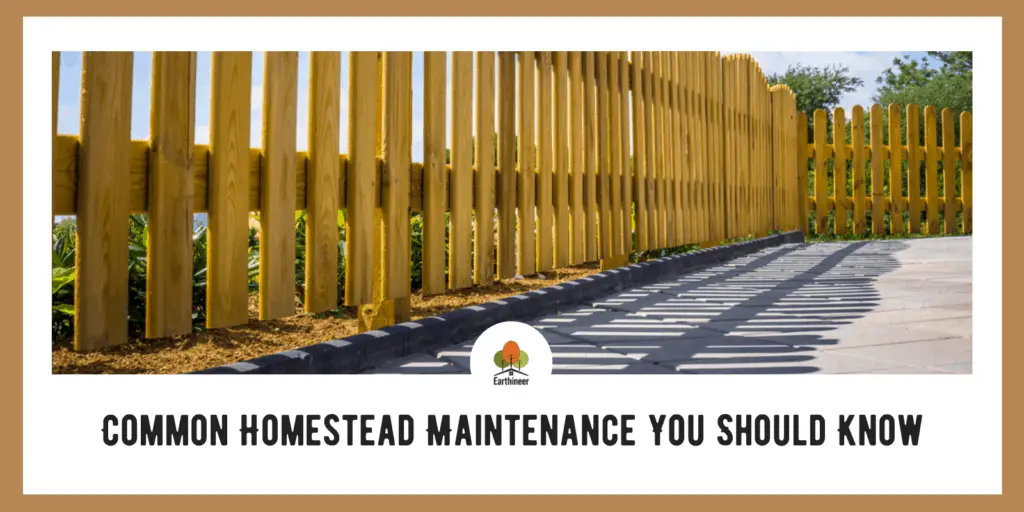
The daily tasks take a lot of time and energy but if you want your property and home to run smoothly, it needs to be consistently maintained.
Common Homestead Maintenance
I know, the dreaded list of maintenance tasks that nobody wants to do, but it must be done. Roll up your sleeves, grab a pen and paper and take note as I outline some common chores that will help keep your property running well.
Additionally, knowing how to do these tasks yourself will save you time and money. Let’s start with something simple.
Gutter Cleaning
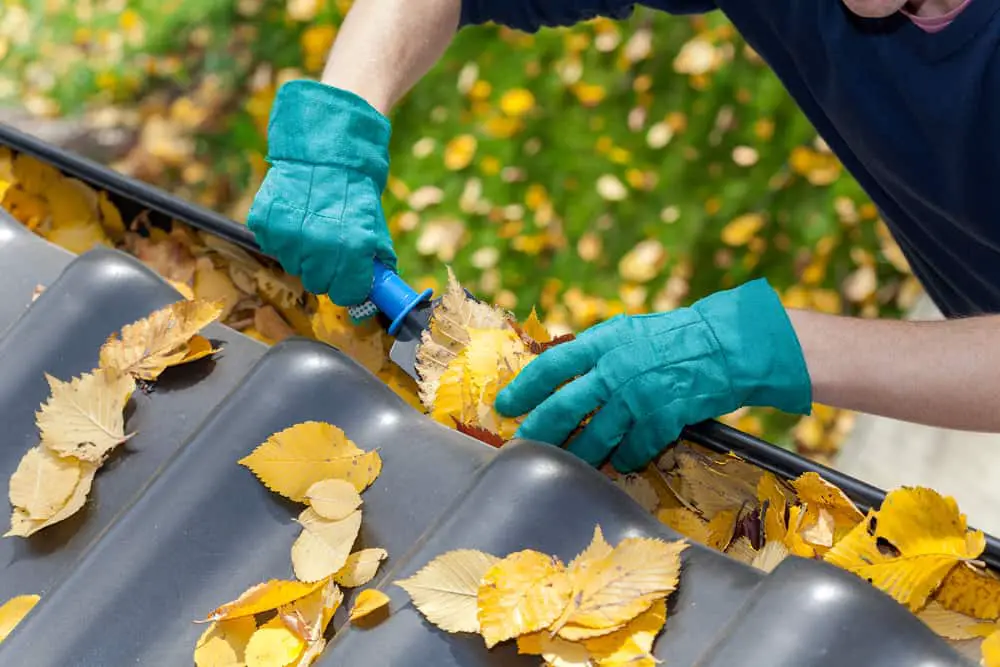
This task is usually accompanied by an eye roll because let’s face it, no one wants to do it. However, something as simple as cleaning the gutters can save money and frustration down the road.
When gutters become obstructed, they cannot do their job of diverting water away from homes and other structures. Anyone who has had water in their basement, or anywhere else in their home for that matter, can tell you it is not a fun experience or cheap to clean up.
Damages are not limited to the inside of a building as overflowing gutters can cause soil erosion which can lead to a host of other problems.
When cleaning gutters be sure to check all hardware and consider installing a mesh screen to help alleviate clogs, especially in downspouts.
Most people can get away with cleaning their gutters out once a year but the schedule will depend on the building’s proximity to trees and other sources of debris.
Drain the Water Heater
A water heater should be drained at least once a year to prevent sediment from building up on the bottom.
As sediment builds up, it can cause a water heater to work harder than it needs to. This will increase your utility bill and shorten the water heater’s lifespan.
This task is super simple, doesn’t require any special tools, and can typically be accomplished in under an hour.
Chimney Inspection
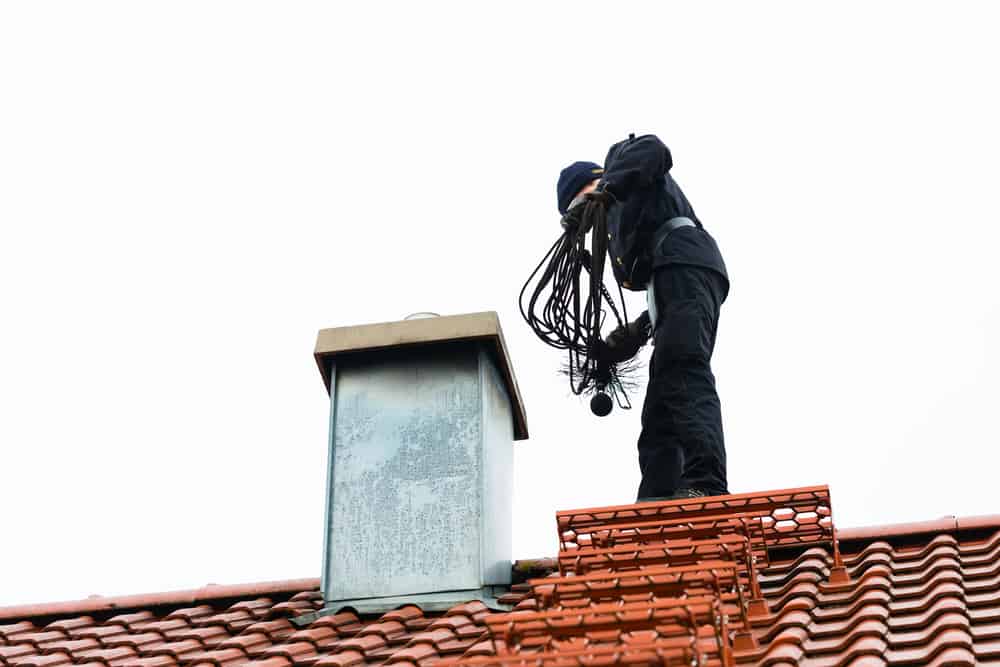
If you have an indoor fireplace that gets used regularly, it should be inspected and cleaned yearly.
Over time, soot and debris can build up on the interior of the chimney walls. Too much build up can lead to smoke and gases venting back into the home as well as present an additional fire hazard.
This task is probably best left to professionals unless of course, you have the tools and knowledge to complete it.
Additionally, this doesn’t apply just to fireplaces but any indoor source of burning, i.e. wood stoves. Also, don’t forget the vents over your ranges as they can accumulate grease and become a fire hazard as well.
Dryer Vents

Cleaning out dryer vents is another common household task that is easily overlooked but it should be completed once a year.
Most of the lint from clothes is caught in the lint trap and some of it gets through and blown outside. But some of it gets caught in the vent and starts to build up. Again, another potential fire hazard.
Other than a screwdriver, the only specialized tool you will want is a long wire brush designed for cleaning out vents. However, since most dryer vents are not too long you may be able to get by with a shop vacuum and a long hose attachment.
Check the Fences

Fences can have an important role on a homestead. They can help to keep critters out of the garden, keep livestock where they are supposed to be, prevent unwanted guests from entering the property and determine property lines.
Some homesteads may have minimal fence lines while others may have a lot. Either way, it is a good idea to frequently check your fences for holes, gaps, loose hardware, and rotted or loose fence posts.
Check the Gates
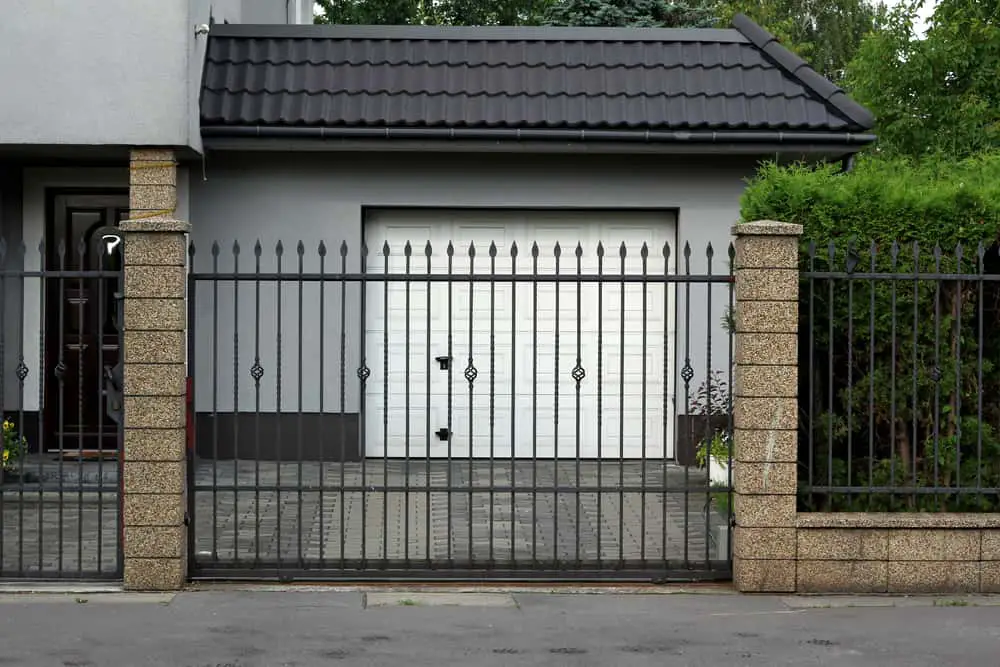
While you are checking your fence line you might as well check any gates. Sagging gates can be an indication of loose hardware or a loose post that it is attached to.
Also, check any locking mechanisms to ensure they are still in good working order. It’s not a good feeling finding a gate wide open and wondering what got out of the property or on to it.
Trimming and Pruning
If you have a homestead, then it is likely there are trees and other vegetation on the property. Depending on the location of trees and plants on the property you may be able to let them grow naturally.
However, if they are close to buildings, work areas, roadways, trails, or pose a possible fire hazard, then it’s probably best to cut them back for safety reasons and ease of working on the property.
Special care should be taken as to when and how a tree should be pruned to avoid causing any damage. Before setting out with the cutting tools, be sure to identify the vegetation and trees on your property and research the best ways of dealing with them.
Seal Up Animal Hutches
Best not to forget about where your animals lay their heads down at night. Check the entire structure for damage that could let in rain, snow, wind, other critters, or be accessible for them to get out. Seal up any other gaps you find along windows, doors, etc. to help keep it warm and safe for them.
Machine and Vehicle Maintenance
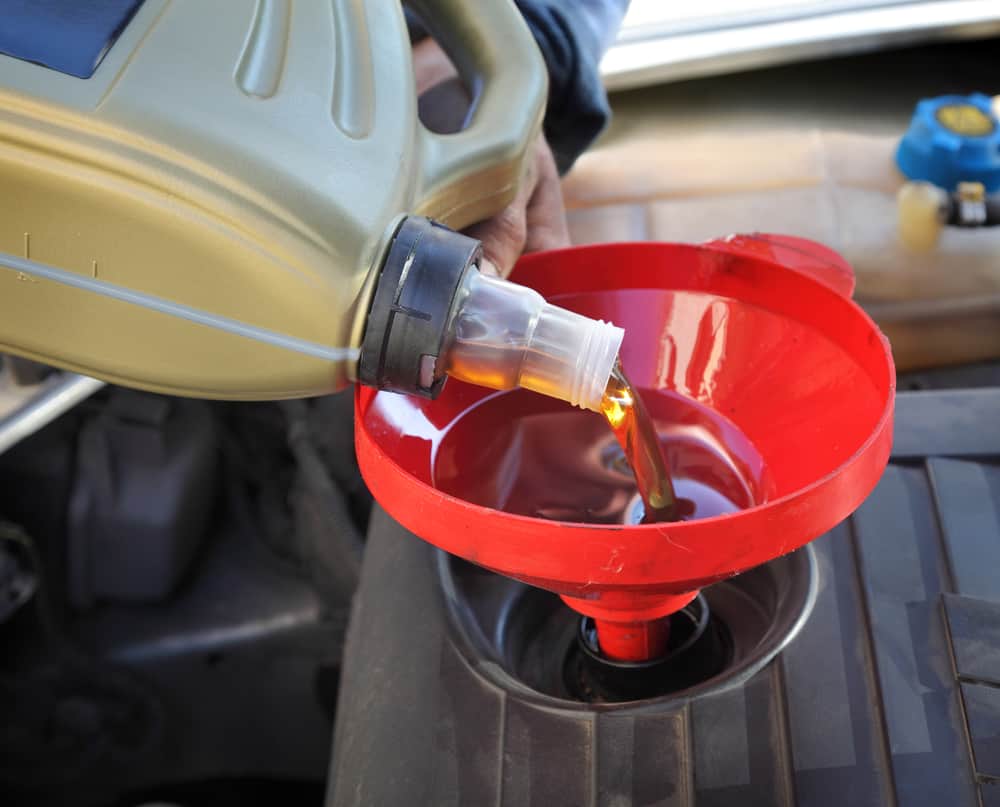
Tools, machines, and vehicles make life a lot easier, but it is easy to forget that they too need some attention from time to time. Whether that be changing a belt, adding some lubrication, sharpening a cutting edge, or replacing some oil.
By ensuring your tools and machines are cared for and stored away properly for the season, they will continue to take care of you and the work that needs to be done.
Create a Schedule
At the beginning of this article, I stated that there is a lot of work to do on a homestead, and with the above maintenance tasks, you have even more on your plate.
The best way to keep track of all this, and to keep yourself on track, is to sit down and make a checklist of all the maintenance tasks you need to do.
The checklist can be as detailed as you want but it also doesn’t have to be that complex. You can use something as simple as a piece of paper that has a column with the tasks followed by a row of the days, weeks, or months of the year.
As you work your way through the list, put a checkmark or write the date in the box after you complete the task.
Marking the date not only indicates that the task was done but when, which can become an important piece of information.
A list like this can be even more detailed if certain tasks require more steps to be checked off. For example, there are numerous tasks involved in keeping a vehicle maintained that should be listed out to make sure they do not get skipped.
Wrap Up
I know that the above suggestions are nowhere near all the maintenance tasks that may need to be done on a homestead, especially a large one.
They are, however, pretty common tasks across most properties and they should give you a good start to personalizing your list.
Thanks for reading and I hope your homestead keeps running smoothly!
